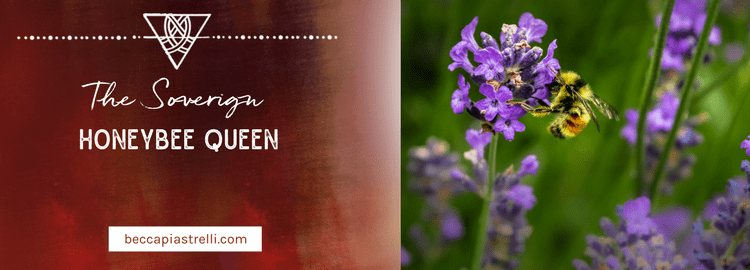
A knowing shiver ran down my spine as I heard those words uttered. I felt my lips mouth a knowing yes as I listened to the radiant shamanic bee priestess speak these words of truth.
For a few months now, I’ve been taking a class called The Folk Medicine and Magic of Old Europe with the amazing Liz Migliorelli.
One weekend a month, I make the long trek up twisty roads – through vineyards, and orchards, dense redwood forests, and along a widening river that finally meets the wild sea town of Mendocino. 12 of us meet in an old red cabin, circling around an altar of candlelight, photos and belongings of our ancestors, and the medicines we make together.
My time in that cabin has been profoundly altering. Not so much in the gathering of knowledge (I’ve got books upon books of stories, facts, and data for that), but in the remembering of the wisdom that already flows through me.
This past weekend, as the sun trickled through the windows and mingled in and out of the incense smoke swirling around us, I became re-enchanted with the honeybee.
As women, we are so naturally drawn to beauty. Flowers are such a profound expression of nature’s range of artistry when it comes to the beauty of this planet.
But flowers (and life itself) would not exist without the honeybee.
Did you know that the honeybee spends the last 2 weeks of her life making love?
Let me explain.
The majority of the bees in the hive are ladies (sisters, actually). They spend most of their short lifetime working in the hive – feeding the young, tending to the queen, cleaning comb, and making sure the hive is in working order.
It is only in their last 2 weeks of their life that they leave the hive to interact with the flowers and pollinate.
Flowers are the sexual organs of a plant. They flaunt their unique shapes and colors to attract the bees to their flowing nectar, who in turn drop some pollen from their bee bodies into the flower and allow for fertilization.
How incredibly beautiful is that? Raw, life-force energy embodied in her final days.
The honeybee was revered in ancient cultures – a symbol of sovereignty and queendom.
She is deeply connected with all living things and isn’t afraid to use her venom when threatened.
In ancient Greece, the bee priestesses (or the melissae) would congregate at the Temple of Delphi where there was a spring from which they would receive the wisdom of the earth. The beehive – the entire unit of bees – was the keeper of that wisdom.
A single bee cannot be of service without her sisters.
That, to me, shows that we cannot do it alone. The honeybee and her hive – perhaps one of the most exquisite creations nature has created – illustrates this beautifully.
In some ancient cultures, honey used to be the first thing that touched a baby’s lips before she took the first drink of milk from her mother’s breast – a symbol of her divinity in human form.
Raw honey is a sacred thing that nourishes our human bodies in so many ways. Beyond the sweetness that delights the tongue, honey is antimicrobial, antibacterial and an antioxidant for the body.
A few ways to incorporate honey into your self-care rituals:
Milk & Honey Bath
Add 1 cup whole milk and 3 tbsp raw honey to a hot bath for a sensual, skin-softening bathing experience.
Herb Infused Honey
Infuse strong smelling aromatic herbs into honey to add to teas and food. I’m about to make use of the lemon balm growing in my garden and will add in some lavender.
You can infuse in 2 ways, depending on if you have dry or fresh herbs.
You can pour the honey over dried herbs and letting it sit for 2 weeks before straining and bottle. You can also warm the honey in a double boiler (being sure it doesn’t get too warm and start to cook) and place dry-wilted fresh herbs in the warm honey for 4-5 minutes at a time 3 days in a row (letting it sit in the pot overnight with the herbs between warming sessions) before straining and bottling.
Raw Honey Face Mask
To soften and moisturize dry skin that’s recovering from the winter, spread raw honey all over your face (or body for that matter) and let sit for 10 mins before washing off with warm water.
Honey is not to be taken for granted. 1 worker bee produces 1/10th of a teaspoon of honey in her lifetime.
I urge you to get to know a local beekeeper and purchase honey that is raw and not processed. The large-scale, conventional honey industry doesn’t serve the longevity of bee populations and processes their honeys so much that it’s nothing much than sugar syrup when you add it to your tea.
I want to hear from you!
What’s your relationship to the honeybee? Did you grow up scared of its sting? Do you keep bees yourself? How do you work with honey in your kitchen or medicine making?
Leave a comment below.
Many thanks to Ariella Daly and Liz Migliorelli for their teaching on the bee that inspired this writing.